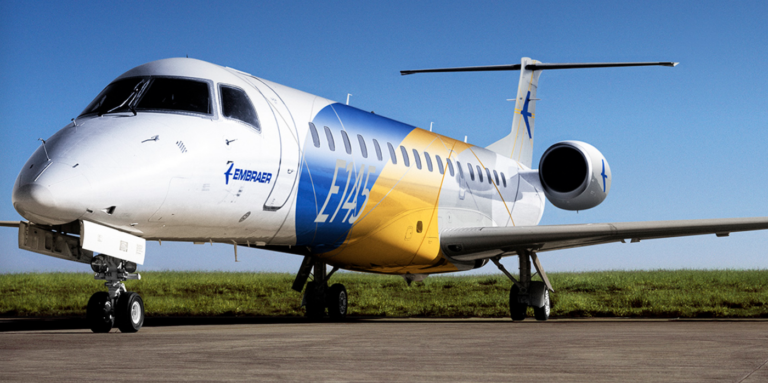Embraer has published a report that identifies “untapped potential” to enhance intra-African air connectivity. The study underscores the critical role of improved air travel in driving economic growth and development across the African continent.
Despite Africa accounting for 18% of the global population, it contributes less than 3% to global GDP and only 2.1% to global air passenger and cargo traffic, according to the International Air Transport Association (IATA). Embraer has found that this disparity is fundamental in the continent’s limited intra-regional air connectivity, which may be a “significant bottleneck” in Africa’s economic and aviation development.
The report identifies the need for more direct flights, with more frequencies, more efficient hubs, improved technology, and stronger partnerships/alliances, plus a focus on right-sized aircraft and passenger experience.
Economic and aviation growth potential
Africa’s GDP is expected to grow at 3.8% per year over the next 20 years, with Revenue Passenger Kilometre (RPK) growth projected at 4.4% per year, surpassing growth rates in Europe and North America. Embraer feels that, although Africa has the world’s lowest propensity to travel, its potential for growth is immense. Developing intra-regional connectivity will be a key driver of this growth.
Current connectivity challenges
Currently, 64% of intra-African markets are served with seven weekly flights or less, indicating a significant opportunity to enhance connectivity. Many African origin-and-destination (O&D) markets remain underserved or entirely unserved by direct flights, forcing some passengers to connect through distant hubs, sometimes as far away as Europe or the Middle East.
Strategic opportunities
Embraer’s report identifies 45 intra-African routes that are not currently served with a direct flight, which could sustain multiple direct flights each week, supporting regional economic growth. The top 10 routes could sustain at least three direct flights per week with a 100-seat aircraft, says the report.
The report also uses an intra-Africa stimulation curve developed by Embraer, based on the last 10 years’ worth of traffic data, which estimates expected passenger numbers when opening a direct flight. The data shows that the stimulation factor varies according to the market size.
For example, a market with 50 passengers before the opening of a direct flight will see a 40% increase in demand. For a smaller market such as 20 passengers, the opening of a direct flight would result in an 80% increase in demand.
Efficient hub operations and increased frequencies are also crucial for improving connectivity quality, offering passengers more flexibility and convenience.
Aircraft deployment
Right-sized aircraft, such as Embraer’s E2, are essential for developing connectivity in fragmented markets. These aircraft offer lower trip costs and increased range, making them ideal for both short and medium-haul routes, and are suitable for opening, sustaining and growing new routes.
Stephan Hannemann, senior vice president sales & marketing, and head of the Middle East and Africa region for Embraer Commercial Aviation said, “This report, and the data behind it, highlights the significant potential for new routes and improved hub connectivity across Africa. By deploying the right aircraft and enhancing intra-regional air travel, Africa can unlock new economic opportunities, improve the overall travel experience for millions of passengers, and unlock the continent’s economic potential.”





